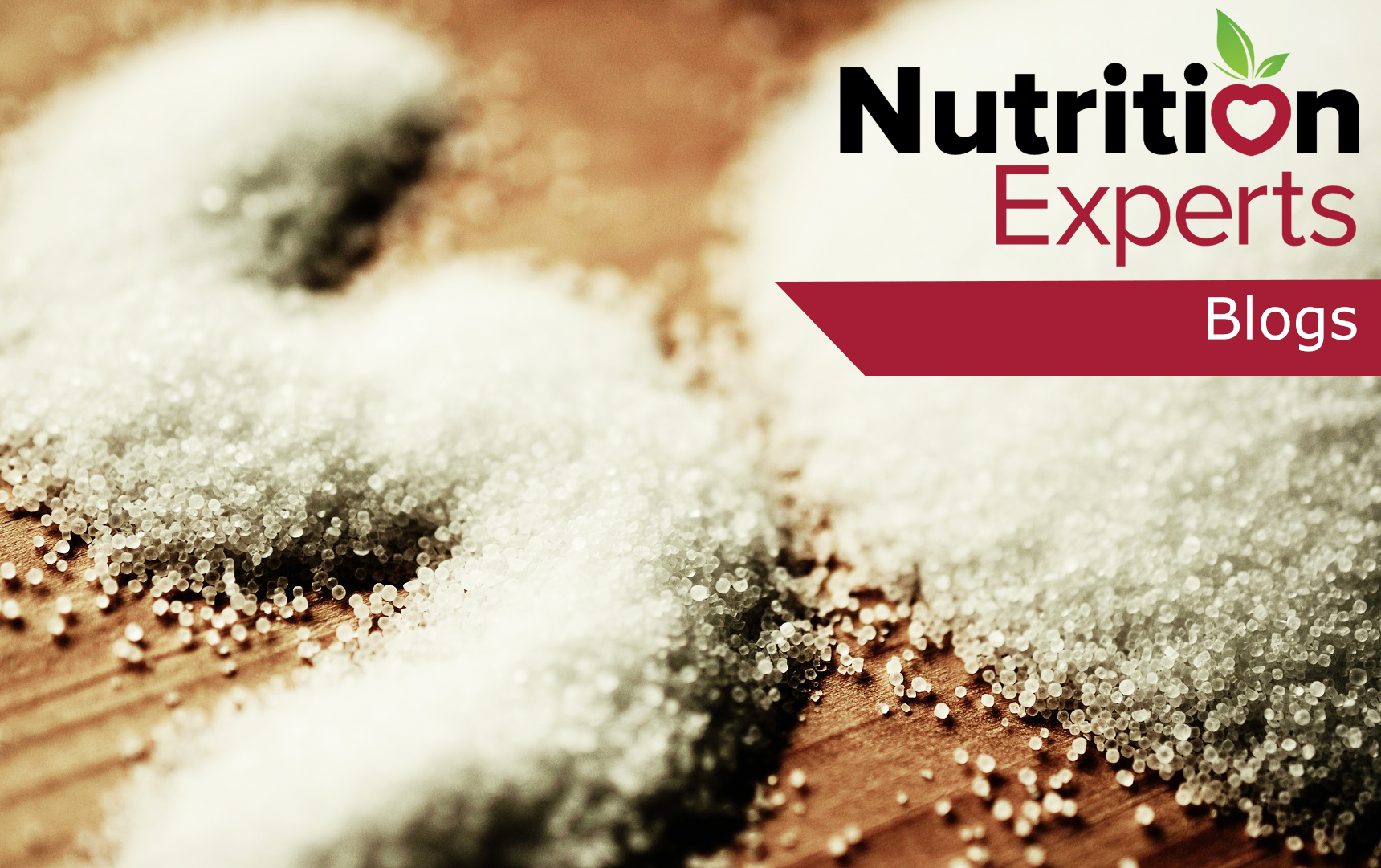
Image: Congerdesign/Pixabay
By Laura Ann Horwitz, CSUN DPD* Student
This is the second of a four part series of articles on Sodium. Eating foods with too much sodium can contribute to high blood pressure, which often leads to stroke, heart attack, and other chronic diseases1. In our last blog article, we reviewed 10 high sodium foods most Americans eat on a regular basis. Here are 10 ways you can cut down on sodium when you are eating on campus (or eating away from home).
1. Choose FRESH products over packaged foods.
Processed and restaurant foods contain over 70% of the sodium consumed by Americans today.2 Added salt water or saline is listed on packages of meat and poultry.2 When buying foods on campus, choose FRESH whenever possible.
2. Read the Nutrition Facts Label.
It is important to learn how to read and understand a Nutrition Facts Label, which can tell you how much sodium is contained in a particular product.3 Daily sodium consumption for most Americans averages more than 3,400 milligrams (mg) per day, yet the U.S. Dietary Guidelines for Americans daily values recommended for healthy eating are less than 2,300 mg a day.4 Compare labels when possible and select lower sodium options.
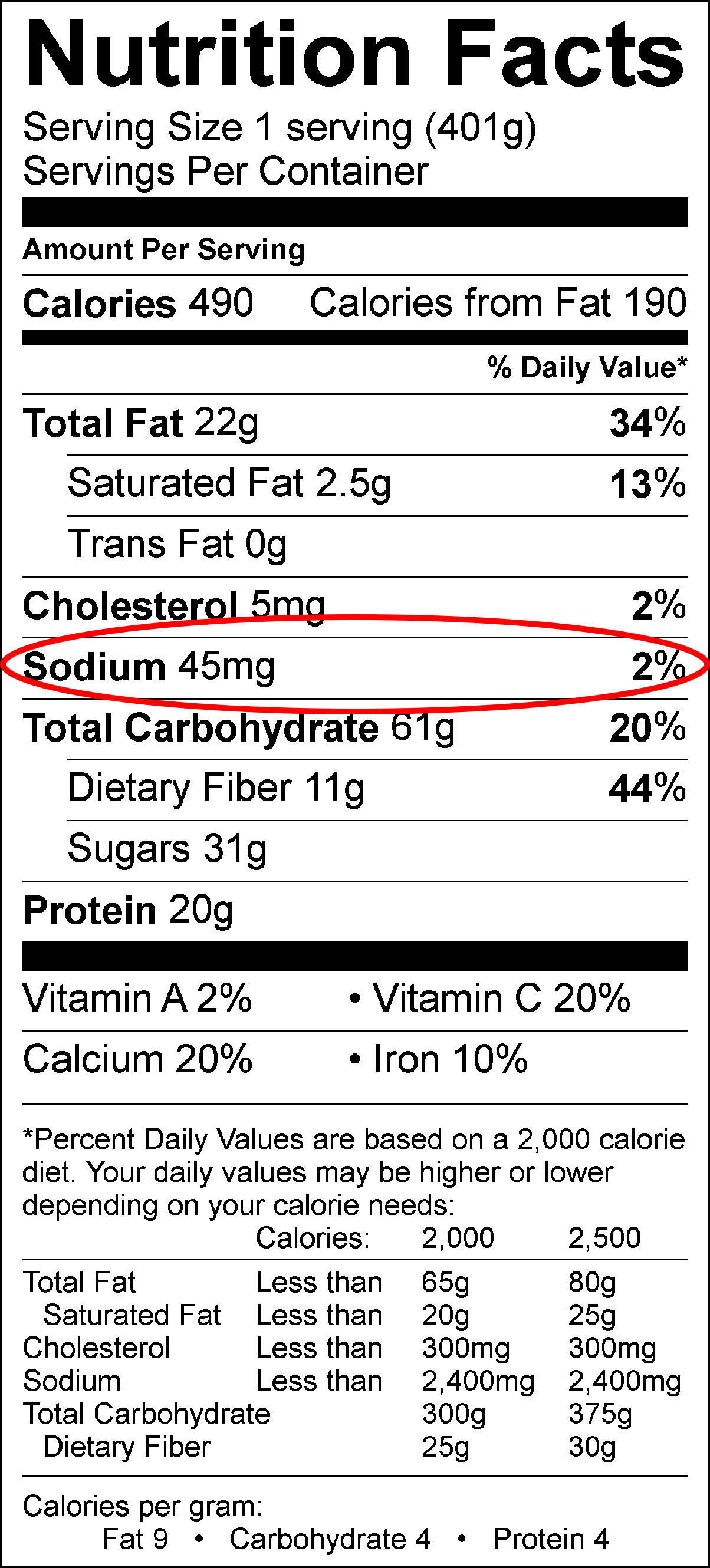
Image: Marilyn Magaram Center
3. Reduce the size of your portion.
By reducing the portion size, you are consuming less sodium. If the serving size listed is 1 cup and you eat half a cup, you are cutting down the sodium of the food you are eating.3
4. Eat more (fresh) fruits and vegetables which are naturally lower in sodium.
Fresh fruits and vegetables generally do not contain added salt. Be careful when choosing canned varieties as they may contain more sodium when they have been processed. Salt is often used as a preservative.2,3
5. Ask that the food be cooked without added salt.
When ordering cooked foods at one of the dining facilities on campus, be sure to request the meal be to prepared without salt added in the cooking process.3 Avoid ordering dishes that have high sodium such as soy sauce, pickles, soups and cold cuts or cured meats, to name a few.3,5
6. Limit ready-made products.
Ready-made products such as canned, frozen or dehydrated foods are often processed with higher levels of sodium which is used as a preservative.6 This can include pasta and rice, or those with mixes and sauces.
7. Choose condiments which are lower in sodium.
Avoid increased sodium in your diet by choosing lower sodium condiments or no-salt herb and spice seasonings.3 Instead of using bottled salad dressings, make your own or use oil and vinegar. Other condiment substitutions to minimize sodium consumption include using citrus juice, ginger, garlic, onions, low-sodium salsa or ketchup, and vegetable oils (canola, olive, safflower to name a few).3,5,7
8. Choose snacks which have no salt or low sodium options.
Packaged snack foods often contain large amounts of sodium. Many snack food brands are available today with lower sodium or no salt added options.3,4,8
9. Bring your own!
Packing your own food at home and storing it in a small portable cooler with an ice pack during the day allows you to eat a wider variety of low sodium foods that can be prepared at home.2,3,9,10
10. Split your meal with a buddy.
When you split your meal with a buddy, you reduce the amount of sodium you are eating by one half. When dining alone, eat half and pack the other half to take with you and eat at another meal.5,6
More Low Sodium Options at CSUN
More low sodium dining options will be available in the future at CSUN with the launch of the Sodium Reduction Initiative (SRI), which is a collaboration between the Marilyn Magaram Center, Los Angeles County Department of Public Health, and CSUN Dining. Expect to see more changes in the future with the campaign: Eat Your Best. Less Salt. More Plants.
“Partnering with Public Health to reduce sodium in foods sold or served on campus further expands CSUN’s commitment to supporting the health and wellness of more than 45,000 students, faculty and staff,” Annette Besnilian, executive director of the Marilyn Magaram Center.
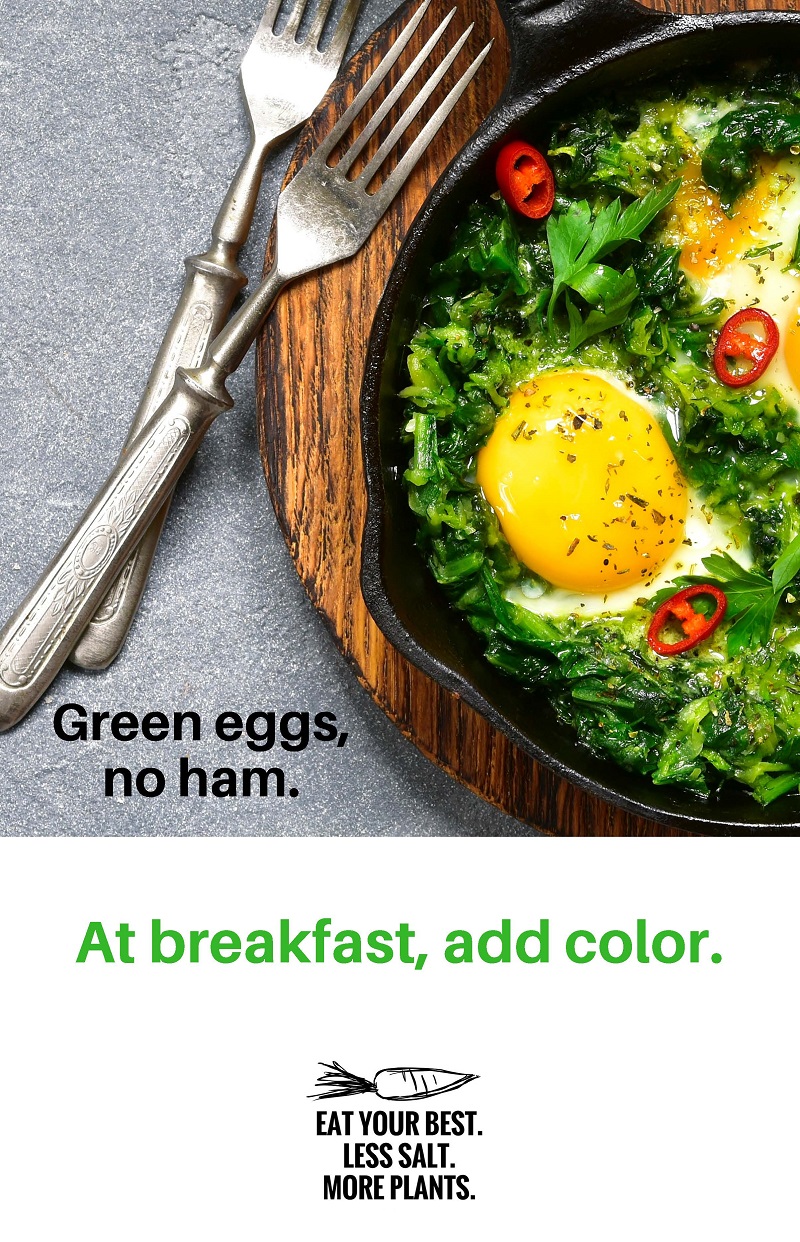
Image: County of Los Angeles Public Health
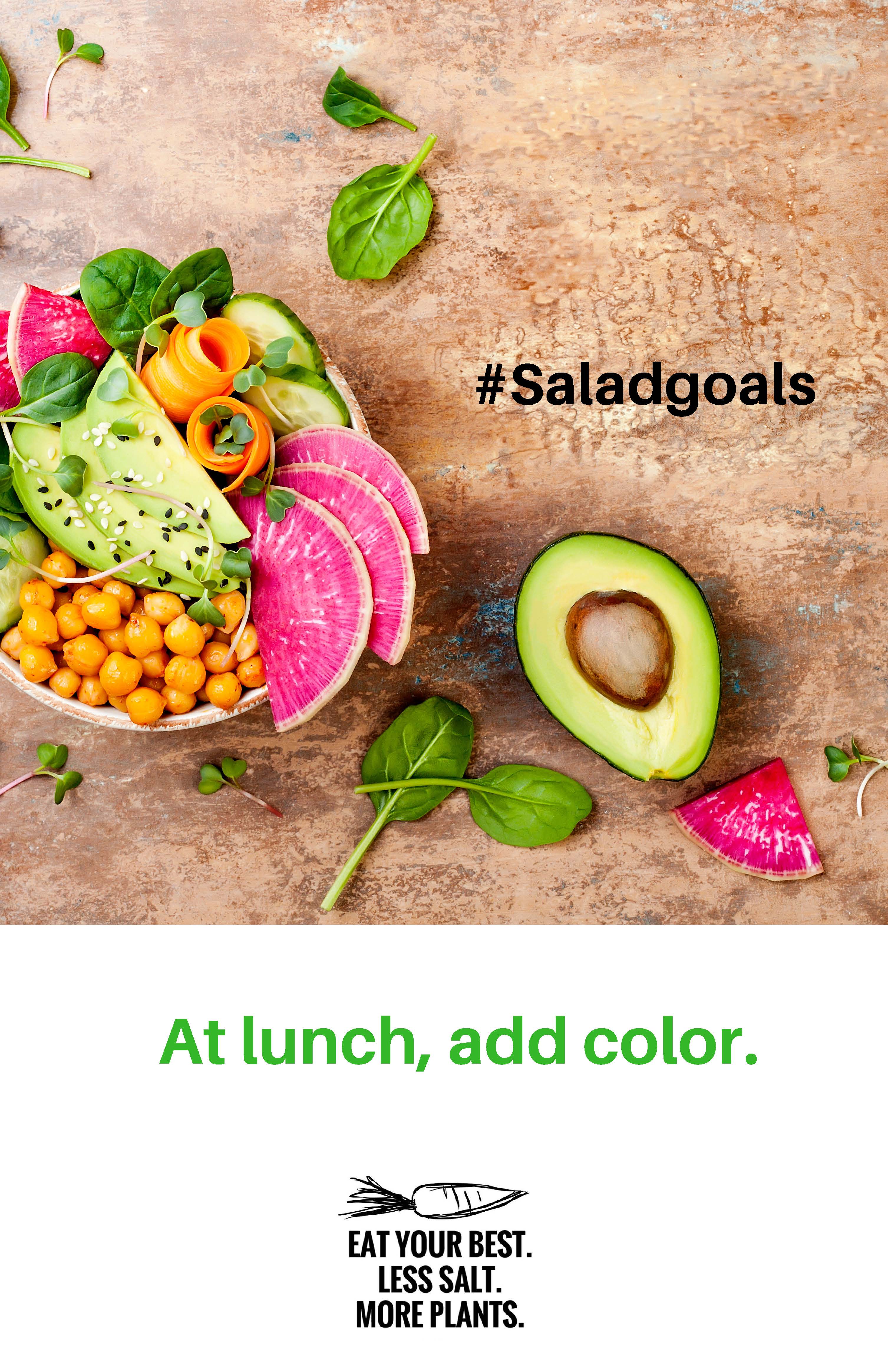
Image: County of Los Angeles Public Health
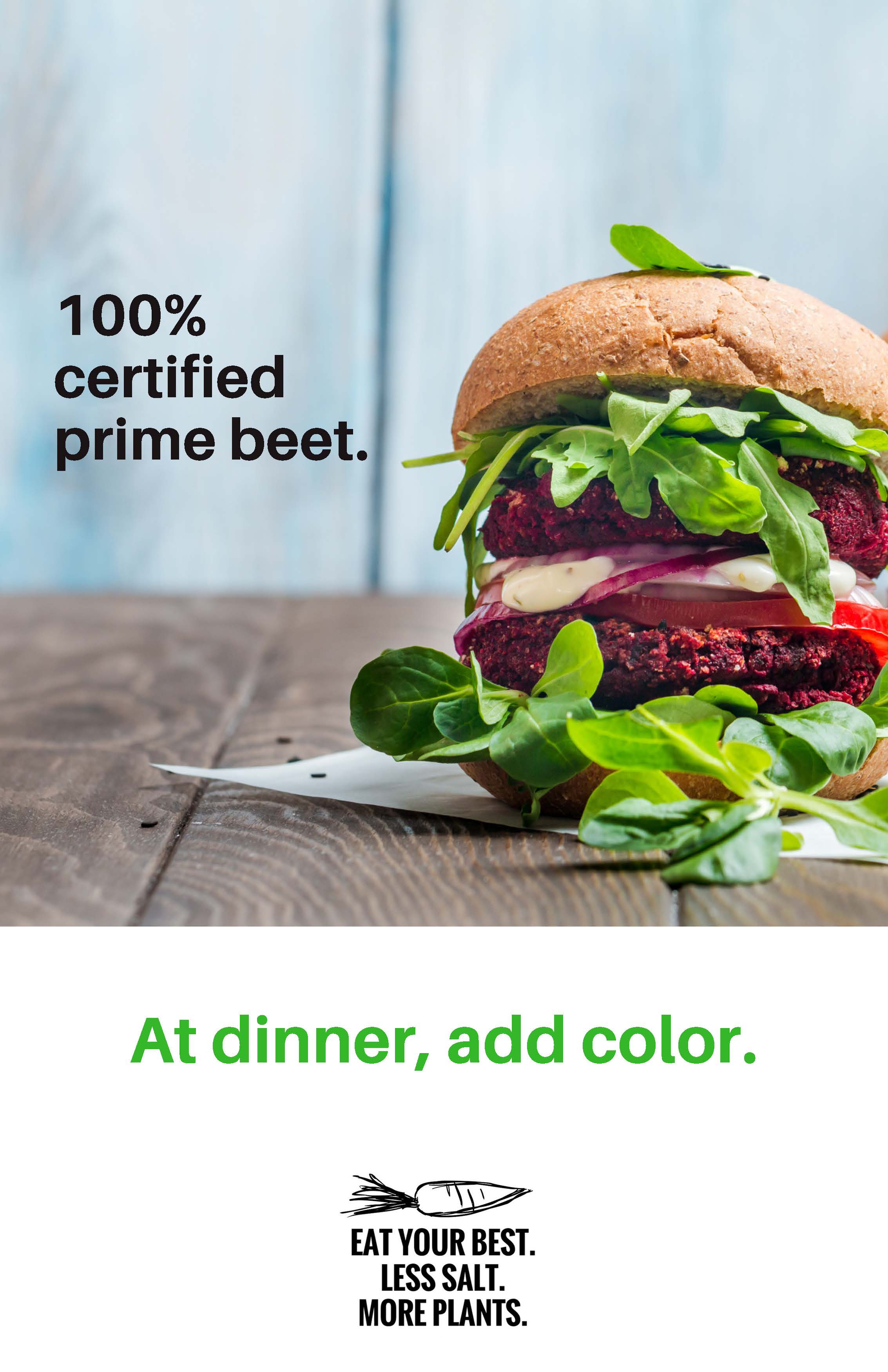
Image: County of Los Angeles Public Health
References:
1. Centers for Disease Control and Prevention. The role of sodium in your food. CDC. https://www.cdc.gov/salt/role_of_sodium.htm. Published March 15, 2018. Accessed June 12, 2018.
2. Centers for Disease Control and Prevention. Get the facts: Sodium’s role in processed food. CDC. https://www.cdc.gov/salt/pdfs/sodium_role_processed.pdf. Published October, 2017. Accessed June 19, 2018.
3. U. S. Department of Health and Human Services. U. S. Food and Drug Administration (FDA). Use the Nutrition Facts Label to Reduce Your Intake of Sodium in Your Diet. FDA. https://www.fda.gov/Food/ResourcesForYou/Consumers/ucm315393.htm. Published June 12, 2018. Accessed June 12, 2018.
4. Centers for Disease Control and Prevention. Sodium and food sources. CDC. https://www.cdc.gov/salt/food.htm. Published March 28, 2017. Accessed June 19, 2018.
5. American Heart Association/American Stroke Association (AHA/ASA). About sodium: how to reduce sodium. (AHA/ASA). https://sodiumbreakup.heart.org/how_to_reduce_sodium?utm_source=SRI&utm_medium=HeartOrg&utm_term=Website&utm_content=SodiumAndSalt&utm_campaign=SodiumBreakup. 2018. Accessed June 21, 2018.
6. Centers for Disease Control and Prevention. How to reduce sodium. CDC. https://www.cdc.gov/salt/reduce_sodium_tips.htm. Published March 22, 2018. Accessed May 29, 2018.
7. U. S. Department of Health and Human Services. Low sodium foods: shopping list. U. S. Department of Health and Human Services. https://healthfinder.gov/HealthTopics/Category/health-conditions-and-diseases/heart-health/low-sodium-foods-shopping-list. June 21, 2018. Accessed June 21, 2018.
8. World Health Organization (WHO). Salt reduction. WHO. http://www.who.int/news-room/fact-sheets/detail/salt-reduction. June 30, 2016. Accessed June 19, 2018.
9. Centers for Disease Control and Prevention. Get the facts: Sources of sodium in your diet. CDC. https://www.cdc.gov/salt/pdfs/Sources-of-Sodium.pdf. March, 2017. Accessed June 19, 2018.
10. Centers for Disease Control and Prevention (CDC). Reducing sodium in children’s diets infographic. (CDC). https://www.cdc.gov/vitalsigns/children-sodium/infographic.html. September 9, 2014. Accessed May 29, 2018.
*DPD = Didactic Program in Dietetics

Pingback: How Sodium Relates to Making Healthy Lifestyle Changes | Magaram Center Nutrition Experts Blog